 Switzerland (1950-1958)
Switzerland (1950-1958)
Medium Tank – 12 Built
The threat from the East
In the 1950’s, with Europe having been just cleaved into two by the Allies and the Soviets, the Swiss, while neutral, were looking quite anxiously towards their eastern border. Especially taking into consideration that their best tank was a slightly improved Jagdpanzer 38(t), the G-13. The Swiss felt underprotected against a possible Soviet threat.
The Soviet IS-3 tank was the one which tormented the minds of the designers most. This vehicle had sent a chill through the hearts of Western military leaders when it rolled through Berlin during the 1945 Victory Parade with its 122 mm gun and futuristic looking turret and pike nose.
The Swiss army thus started looking for a new medium tank capable of defending Swiss soil. While buying foreign vehicles or licensing a design would have been cheaper, no vehicle available on the market at the time proved adequate for what the Swiss military desired, and they set the bar high. They wanted a vehicle with good armor and armament, but also one that had the mobility to handle the Swiss terrain.
In lack of alternatives, the Swiss designers got to their drawing boards and got to work trying to make a tank that not only fully achieved the perfect triangle of mobility-firepower-protection, but could also go up mountains. The tank designers had to start practically from scratch, as they had almost no experience with regards to making AFVs aside from the Nahkampfkanone I and II tank destroyers.
The Misconception
Contrary to popular belief, the Panzer 58 was not based on the ‘Indienpanzer’ project, a German medium tank designed for the Indian army.
While there are some visual similarities between the two, this claim is not correct. The ‘Indienpanzer’ is never mentioned in any of the official documents of the Panzer 58 project. In fact, the Panzer 58 had more in common with American tanks than it did with German ones.
The 30 ton Panzer aka KW 1950
The first design on the ladder that would eventually lead to the Panzer 58 appeared in 1950 and was named, rather unimaginatively, the 30 ton Panzer alias the KW 1950 in later documents.
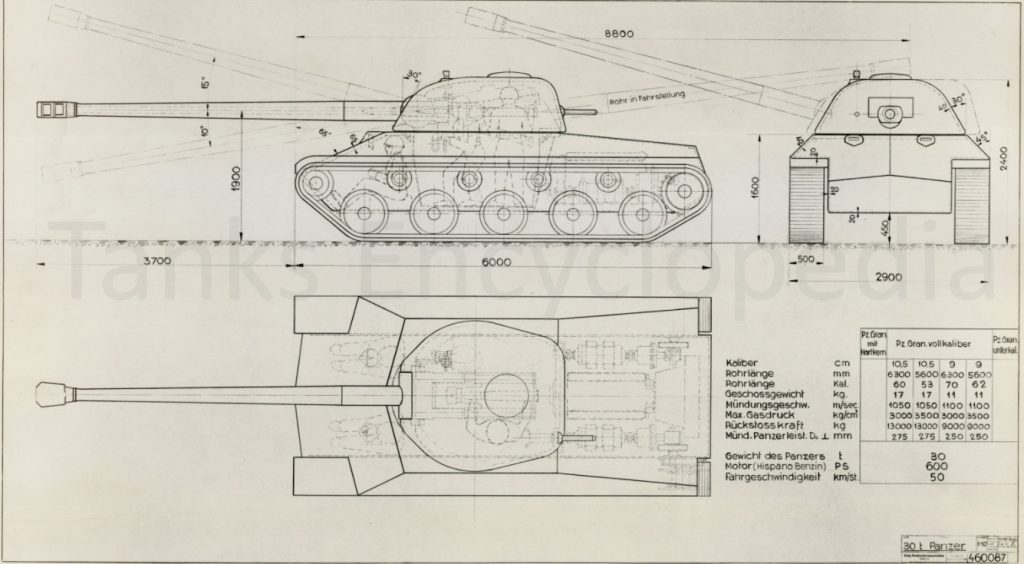
KW 1950 ’30ton Panzer’
It would have sported a 600 horsepower engine which, along with its maximum width of just 3 meters, making it ideally suited for the narrow alpine roads in Switzerland.
Firepower-wise, the design team didn’t settle on a single gun, but took into account 4 different guns, two 90 mm ones and two 105 mm ones, differing by length.
The secondary armament consisted of 2 guns; a coaxial gun on the right side of the turret where the gunner was located, and one at the rear of the turret on the left side, behind the loader. While no caliber was mentioned explicitly, they would’ve most certainly been 7.5 mm’s, as that was the most used MG caliber in Switzerland at the time.
The frontal hull armor was meant to be 65 mm ( 2.56”) thick and welded. It had a beak shape, very similar to the IS-3, meant to increase the effectiveness of the armor against threats directly in front of it, due to angling. As an example, only taking into account the 65 degrees from the horizontal of the upper plate, this roughly translates to 150mm (5.9”) of effective armor thickness.
This is comparable to the Soviet IS-2 tank, but less than the protection of the Soviet T-54, IS-3 or American M48 Patton. However, the 30 ton Panzer was meant for the Swiss countryside, where all those better armored tanks would prove heavy, slow and vulnerable
The side hull armor thickness was significantly weaker, with 20 mm (0.78”) of armor below the tracks and up to 40 mm (1.57”) on the upper part of the side. This was an ‘all-or-nothing’ bet that was meant to maximise frontal protection, but sacrifice it everywhere else for the sake of mobility.
The turret had an interesting hemispherical shape which required casting, as opposed to welding. The thickness would have been around 65 mm (2.56”) for the front and 45mm (1.77”) for the sides. However, the internal mantlet provided significant extra protection, and the shape of the turret improved effective protection too. Furthermore, the design drawings show a gun depression angle of up to 10 degrees, which would have allowed the vehicle to take advantage of the terrain by revealing only it’s turret over crests and hilltops.
There was also a proposal of a 15 ton version of the 30 ton Panzer. At that time, Switzerland hadn’t received their AMX-13 light tanks from France yet. Not much is known about that vehicle, but it is possible it was just a lighter version of the 30 ton design, with the same size and engine power. It was, however, planned with a different gun: a 9cm L/39 gun, which was mainly intended to fire HEAT ammunition. Based on the weight difference between the 30 ton and 15 ton version is is likely that the armor would have been extremely thin all around.
KW 1950 specifications |
|
| Dimensions | 8.8 x 2.9 x 2.4 m (28’10” x 9’6” x 7’10” ft) |
| Total weight, battle ready | 30 tons |
| Crew | 4 (commander/radio, driver, gunner, loader) |
| Propulsion | 600 hp (441 kW) Hispano Suiza Petrol engine, 20 hp/ton |
| Suspension | Torsion bar suspension |
| Speed (road) | 50 km/h (31 mph) |
| Armament | 90 mm (3.5 in) or 105 mm (3.13 in ) gun |
| Armor | 65- 350 mm (2.5-13.77 in) front turret 65 mm ( 2.5 in) front hull 20-40 mm side/ rear (0.78-1.57 in) |
| Total production | none |
| For information about abbreviations check the Lexical Index | |
The KW 30 1952
For some reason, the Swiss Army was not satisfied with this and the 1950 design never left the drawing board. However, it evolved into the KW 30 1952. The KW stood for the name of the Construction Workshop or Factory in Thun that built a lot of the Swiss military armament, including the tanks and translates to “Eidgenössische Konstruktionswerkstätte.”
The designers did settle on a main armament, a 90mm L/60 rifled gun. The secondary armament would have likely been a 7.5 mm coaxial gun. The original design kept the 600 hp German Maybach engine. The transmission was also derived from that of the famous German Tiger. This engine, and transmission combined with the intended 30 ton weight, it would have had a power to weight ratio of 20 hp/ton. This was significantly higher than that of the Soviet T-55, American M48 or British Centurion.

KW 30 side view
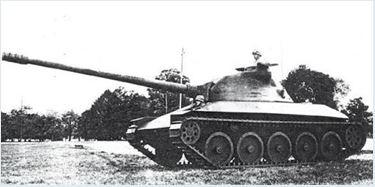
KW 30 front-side view
KW 30/52 specifications |
|
| Dimensions | 9.7 x 2.9 x 2.55 m (31’9” x 9’6” x 8’4” ft) |
| Total weight, battle ready | 33 tons |
| Crew | 4 (commander/radio, driver, gunner, loader) |
| Propulsion | 600 hp (441 kW) Maybach Diesel engine, 18.18 hp/ton |
| Suspension | Torsion bar suspension |
| Speed (road) | 45 km/h (28 mph) |
| Armament | 90 mm L/63 (3.5 in) gun |
| Armor | 70 mm (2.75 in) front turret 60 mm (2.36 in) front hull 45 mm sides( 1.77 in) |
| Total production | 1 mockup and 1 prototype |
| For information about abbreviations check the Lexical Index | |
The Panzer 58
A year later, it was also proposed to give the KW 30 a rounded hull similar to that of the M48 Patton and slightly increase the width.
This proposal led to the last version of the KW 30, of which one prototype was built in 1957. This vehicle is also called the ‘Panzer 58 First Prototype’.
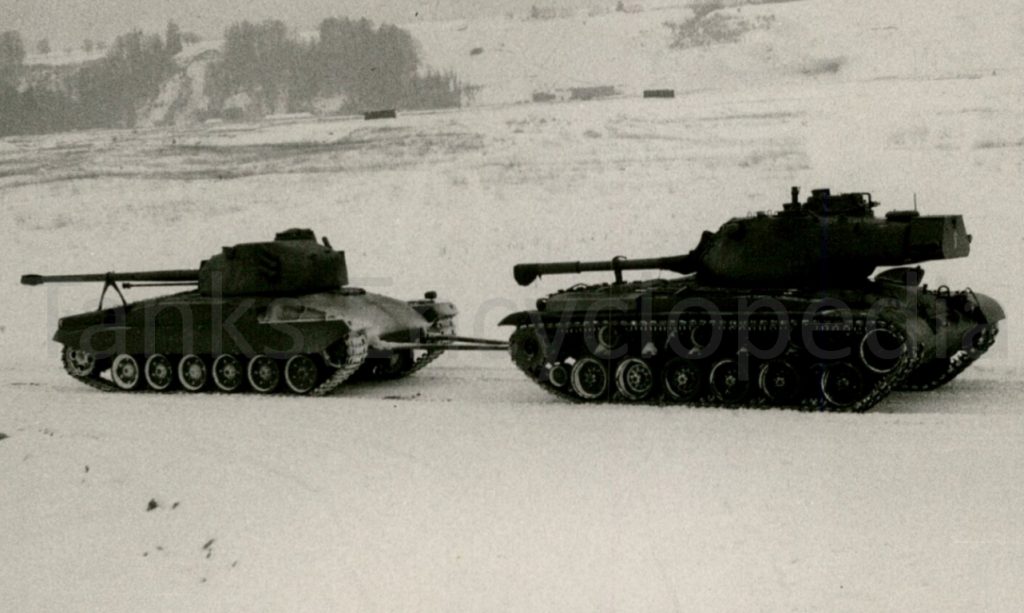
KW 30/57 towed by a M47 Patton
It had smaller diameter wheels compared to the 1952 version and the same style of rounded turret. It got a Model 48 90mm gun, received side skirts and got a coaxial Bührle 20mm 5 TG autocannon. The crew was kept the same as on the KW 30 1952.
The 2nd prototype lost its side skirts and had a longer wheelbase. A British 20 pdr gun was chosen over the 90 mm L/60, because a surplus of spare parts was available from the existing stock of Panzer 55 Centurions. This is the vehicle that still stands in the Thun military museum and of which so many photos exist online.

Panzer 58 second prototype located at the Panzermuseum Thun, Switzerland – Image by Yuri Pasholok
The Panzer 58 was changed again; this time up-gunned with the famous Royal Ordnance L7 105mm gun. This gave the tank the needed punch to face off against almost any enemy tank of its time.
The 20 mm coaxial gun is an interesting feature particular to the Panzer 58s, that disappeared from the vehicles that followed. It was meant to allow the tank to engage lightly armored vehicles without having to fire its main gun. It had a low firing rate and ammo capacity, which reduced its usefulness against enemy infantry.
A small series of just 10 such vehicles was built, and they were in service with the Swiss Army for a short while.
In the meantime, the Swiss Parliament decided to buy 150 Panzer 61s. These were improved Panzer 58s and quite similar. The small batch of the Panzer 58s was eventually upgraded to the Panzer 61 standard, but when or how this was done isn’t known.

Panzer 61 AA9 at the 2017 IMFT in Full Reuenthal – Image by IMGUR user Chrüeterchraft
There were further plans to create a Self Propelled Gun version by mounting a 150mm gun on the Panzer 58 but instead the Swiss army eventually mounted a 155mm gun on a Panzer 61 and later on the Panzer 68 chassis. These vehicles were designated as the Panzerkanone 61 and Panzerkanone 68 respectively.

Panzerkanone 68
Another experiment on the Panzer 58 chassis was proposed in 1970, when the Swiss military wanted to mount the drivetrain of an MBT project known as ‘Panzer 74’. This used the MBX 833 BA-500 engine and the Renk HSWL 183 transmission in the chassis of a Panzer 58 for testing purposes.
Panzer 58 specifications |
|
| Dimensions | 9.45 x 3.04 x 2.65 m (31′ x 9’11” x 8’8” ft) |
| Total weight, battle ready | 35 tons |
| Crew | 4 (commander/ radio, driver, gunner, loader) |
| Propulsion | MTU MB 837 600 hp (441 kW), 17.1 hp/ton |
| Suspension | Torsion bar suspension |
| Speed (road) | 50 km/h (31 mph) |
| Armament | 1st Prototype: 90 mm Kanone 48 2nd prototype: 84 mm Panzerkanone 1958 (20 pdr) prototype 3 to 12: 105mm Panzerkanone 1960 (RO L7) |
| Armor | 70-138 mm ( 2.75-4.7 in) front hull 120- 193 mm (4.7-7.59 in) turret 30-40 mm ( 1.18-1.57 in) sides/rear hull 65-40 mm (2.55-1.57 in) side/rear turret |
| Total production | 12 vehicles 1957-1958 |
| For information about abbreviations check the Lexical Index | |
Conclusion
The Panzer 58 development has quite a long and interesting history and ends with the Panzer 68 in 2003. Being Switzerland’s first ever home-developed tank it was quite a good design. It could have been so much more if the economy would have allowed it.
Article written by Joris Peier and Stan Lucian
Sources
Swiss National Archives
Yuri Pasholok livejournal https://yuripasholok.livejournal.com/
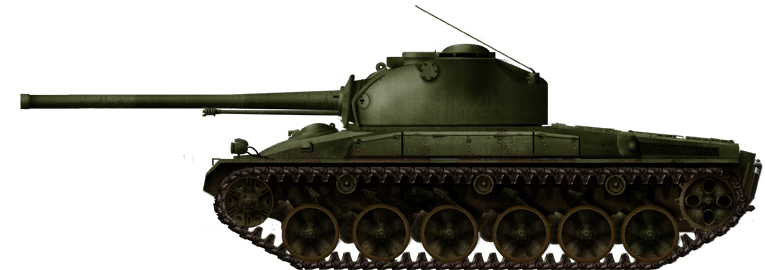
Panzer 58 by tank encyclopedia’s own David Bocquelet
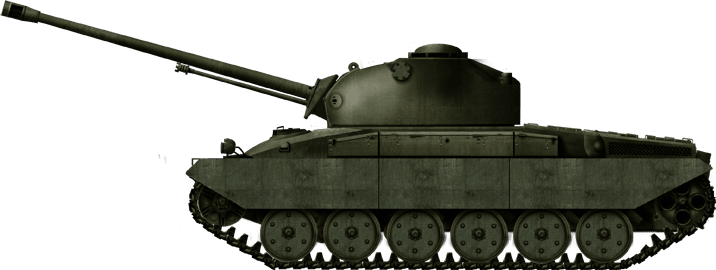
KW 30/57 prototype

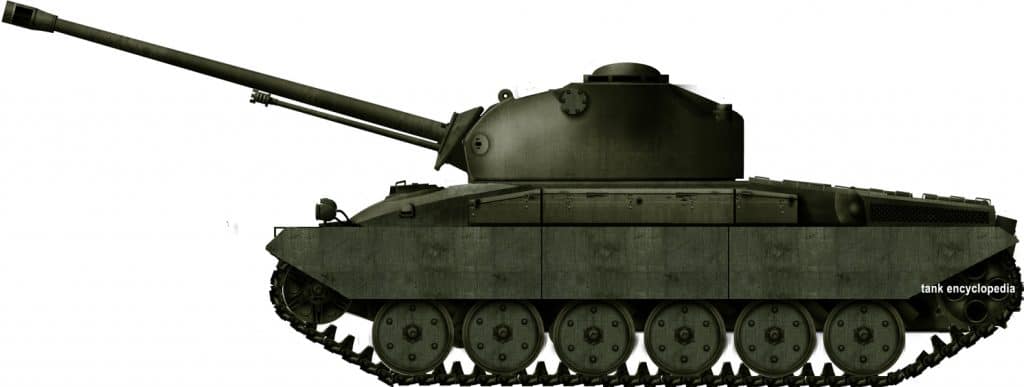
One reply on “Panzer 58 and Its Development”
Its prototype estimates seem a little bit off or rather very optimistic Swiss estimates. No tank with that amount of armor, firepower and of that size would weight meager 30 tons! This is proven by its last production model which has less armor, less firepower and is still heavier than early prototype models.